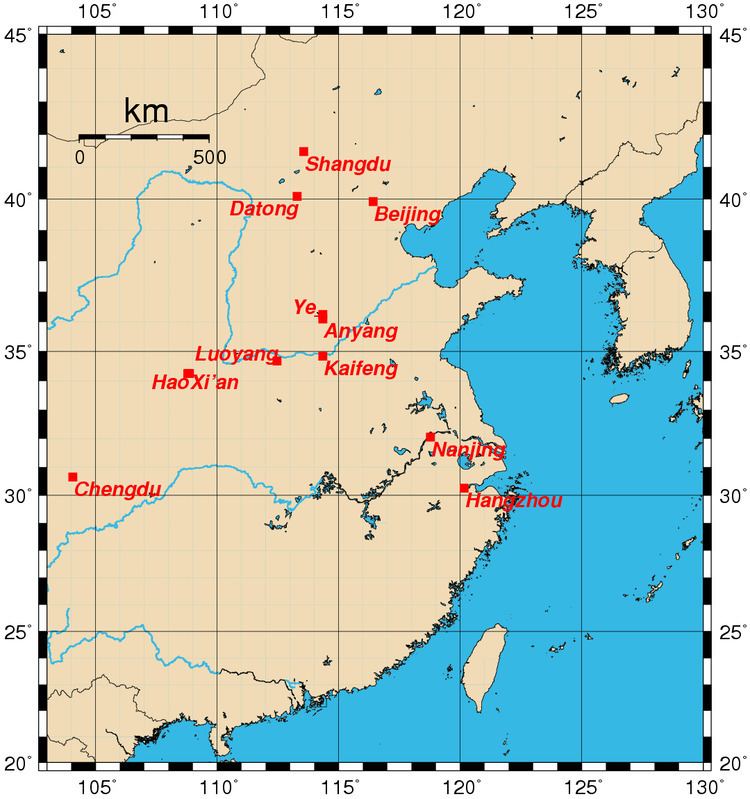 | ||
There are traditionally four historical capitals of China, collectively referred to as the "Four Great Ancient Capitals of China" (中国四大古都; 中國四大古都; Zhōngguó Sì Dà Gǔ Dū). The four are Beijing, Nanjing, Luoyang and Xi'an (Chang'an). As more new archaeological evidence began to be uncovered since the 1930s, other historical capitals have been included in the list. The phrase "Seven Ancient Capitals of China" now includes – in addition to the earlier four – Kaifeng (added in the 1920s), Hangzhou (added in the 1930s), and Anyang (added after 1988). In 2004, the China Ancient Capital Society officially included Zhengzhou as the eighth historical capital in light of new archaeological findings dating from the early Shang dynasty.
List of historical capitals of China
Sorted in alphabetical orderReferences
Historical capitals of China Wikipedia(Text) CC BY-SA
